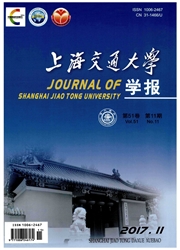

 中文摘要:
中文摘要:
对熔融碳酸盐燃料电池/燃气轮机(MoltenCarbonateFuelCell/Micro—GasTurbine,MCFC/MGT)混合动力系统中催化燃烧室(CatalyticCombustionBurner,CCB)的反应特性及影响因素进行了分析,并基于燃气轮机的设计方法进行了混合动力系统的设计.在对催化燃烧室的数值模拟中采用了塞子流模型及CH。在催化剂Pt上的详细反应机理,在实验中对3种不同催化剂的反应特性进行了分析.混合动力系统设计中,以燃料电池的温度为限制条件,采用基于现有燃气轮机对燃料电池进行匹配的设计方法,确定了混合动力系统的设计点参数.分析结果表明,所建立催化燃烧室模型可以反映燃烧室的特性,以钙钛矿和金属氧化物为助剂的催化剂活性要比责金属的差,基于燃气轮机设计的混合动力系统虽然效率低但更具有实际意义.
 英文摘要:
英文摘要:
Abstract: The reaction performance and influencing factors of catalytic combustor in the molten carbonate fuel cell/micro-gas turbine (MCFC/MGT) hybrid system were studied, and a hybrid system was designed based on the commercial gas turbine. The combination of numerical simulation and experimental study was used to study the catalytic combustor. The plug flow reactor model and detailed reaction mechanism of CH4 on Pt were used for the numerical simulation, and reaction performances of 3 different catalysts were studied in the experimental study. The design point parameters of the hybrid system were identified based on the commercial gas turbine, using the fuel cell temperature as the limiting condition. The results show that the model created can reflect the characteristics of the catalytic combustion burner, the reaction activi- ty of the perovskite and metal oxide catalyst is poorer than the noble metal catalyst. Though the efficiency of the system based on the commercial gas turbine is lower, this design is more practical.
 同期刊论文项目
同期刊论文项目
 同项目期刊论文
同项目期刊论文
 期刊信息
期刊信息
